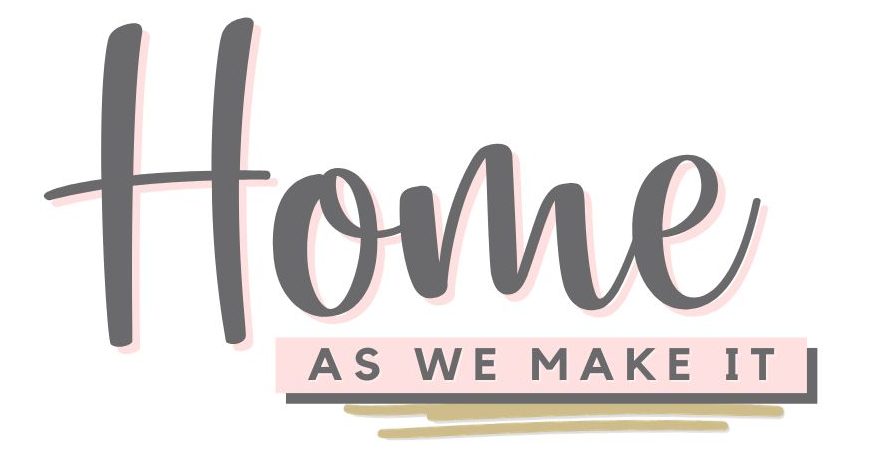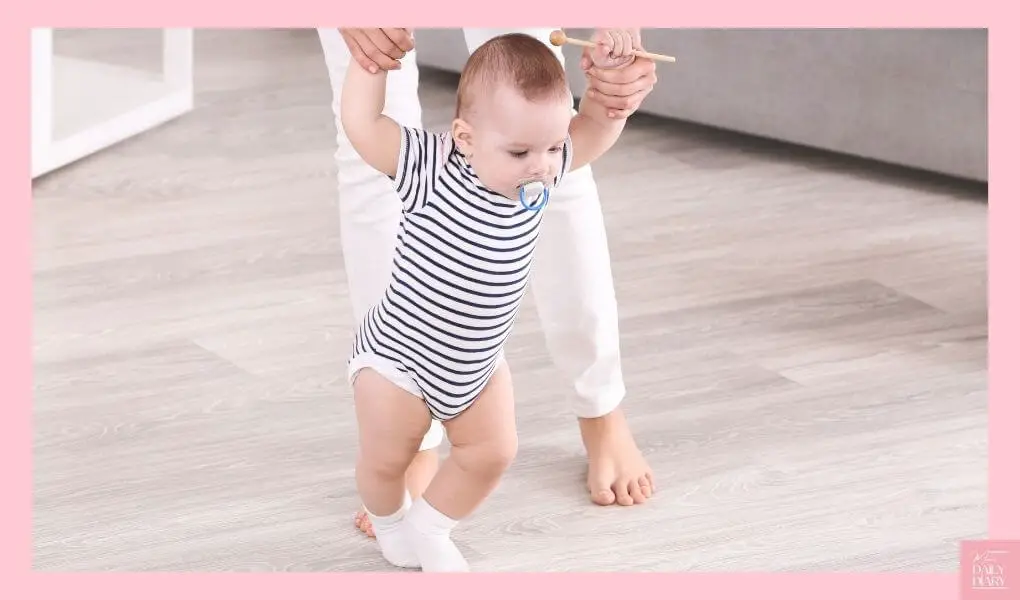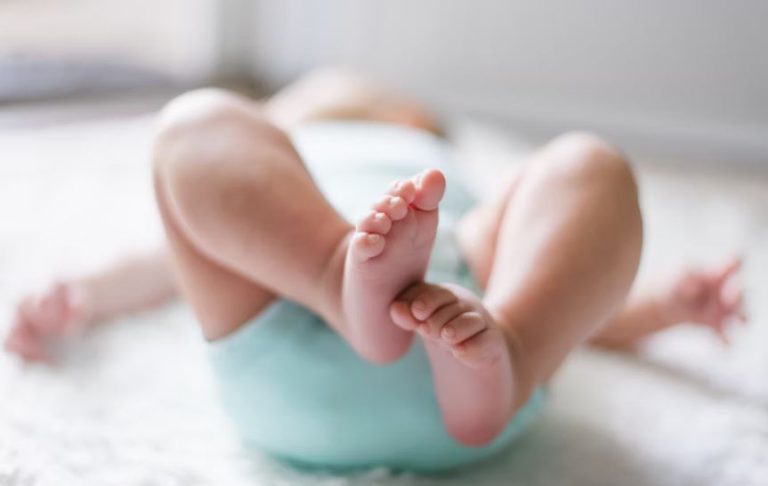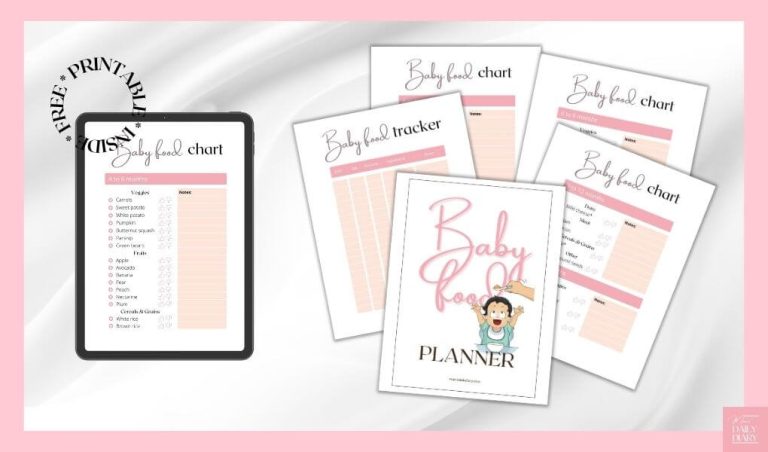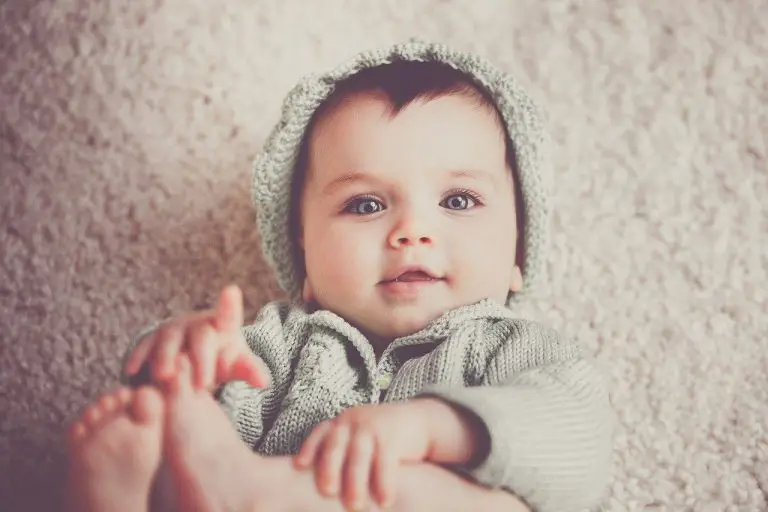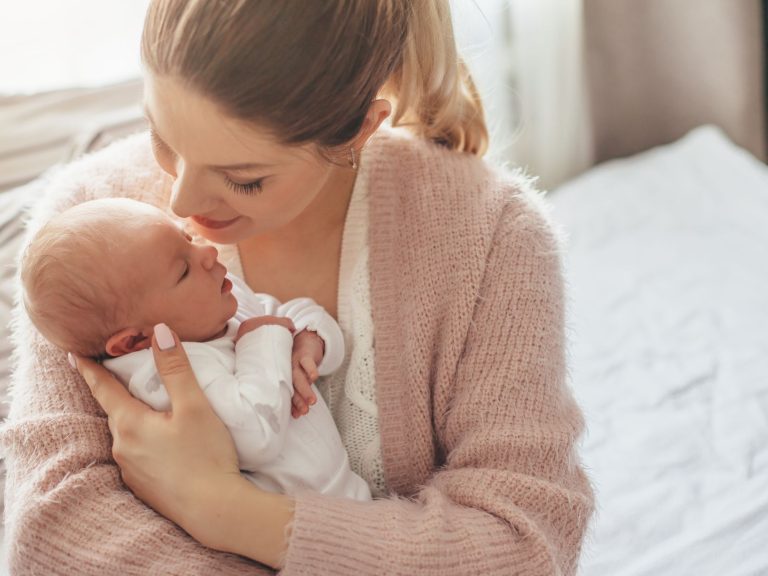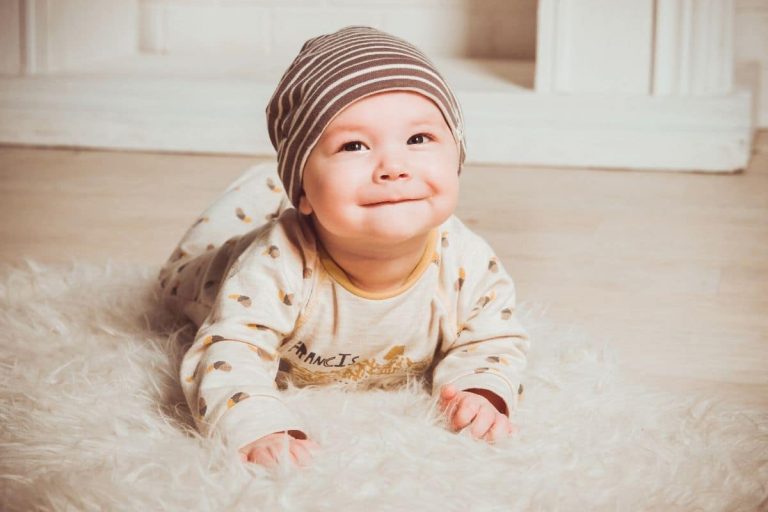10 Months Baby Development. What You Need To Know
Note: This post may contain affiliate links, which means if you buy from my link I might make a small commission. This does not affect the price you pay. See the full affiliate disclosure here.
Did you start thinking about your baby’s first birthday party?
It’s really not that early. In fact, now is the perfect time to book a Cake Smash photoshoot for their big day.
Now, if you’re done booking the photographer, let’s see what’s new in terms of 10 months baby development. It’s time for your baby to switch to a single daily nap, start saying mama and dada, and maybe even make their first steps.
What to expect from your 10 months baby development
Physical growth
At 10 months, your baby’s height and weight gain have slowed down majorly. And that’s a good thing because they’ll finally be able to wear their clothes for more than a couple of months.
On average, a 10-month-old baby boy weighs between 7.3 kg (16.1 lb) and 11.7kg (25.9 lb). Their height would usually be 67 to 77 cm (26.4 to 30.2 in).
A baby girl, on the other hand, would be 66 to 77 cm (26 to 30.2 in), while their weight would fall between 6.8 kg (15 lb) and 11 kg (24.3 lb).
What’s behind the huge margins? There are a lot of factors involved including:
- Birth size
- Sleep and feeding schedule
- Genes, i.e. mom and dad’s own structure
Whether your baby is on the low or high end, or right in the middle, the important thing is to be healthy and active. Should you have any concerns, be sure to discuss them with your pediatrician. They can calculate their ideal measures based on their birth weight and height.
Sleep
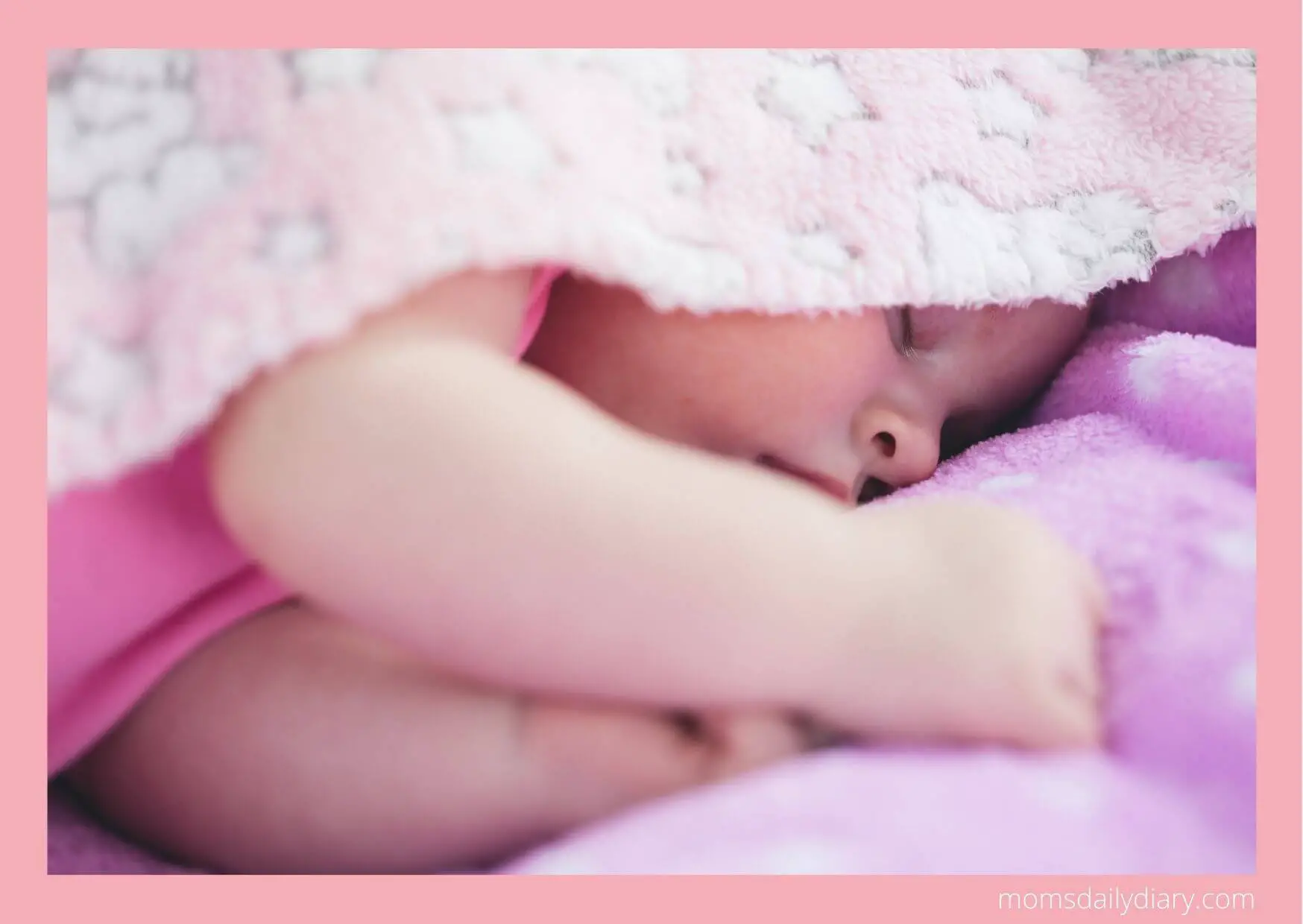
As part of their 10 months baby development, they may reduce their daily naps to a single noon-time nap. This usually happens anywhere between the 10th and 13th months.
Still, don’t think that your little one will drastically stop sleeping all of a sudden. 10-month-old babies still need about 14 hours of sleep every day.
Switching from two to one daily nap only means that they will have one longer nap instead of two shorter ones. And from personal experience, both of mine started to fall asleep easier in the evening after switching to a single nap.
Another bonus is that most 10-month-olds are able to sleep through the night without waking up for feeding, so if you’re not there just yet, here’s your light at the end of the tunnel.
To ensure the transition is easy on your child and they have a sound sleep both at night and during the day, make sure you create and stick to a bedtime routine. Not sure how? Check out the sample 10-month baby schedule below.
10-month baby food
At 10 months your baby’s diet is not so strict anymore which is a great relief for mom. Here are a few new tastes you can introduce if you haven’t already:
- Mild cheese*
- Ham
- Bacon
- Pasta*
- Flat ground seeds
* These foods contain potential allergens so you should consult with your pediatrician if your baby has a history of allergies.
When it comes to the 10-month baby food, however, the biggest change comes not from the new ingredients but the texture. You will no longer need the blender that used to be your best friend for the past few months.
Instead, you can offer the new textures as they are or just mashed with the fork.
And if the idea of testing these new textures inspires you as it inspires me, here are a few easy to cook baby recipes by Made for Mums that are suitable from 10 months.
Motor skills
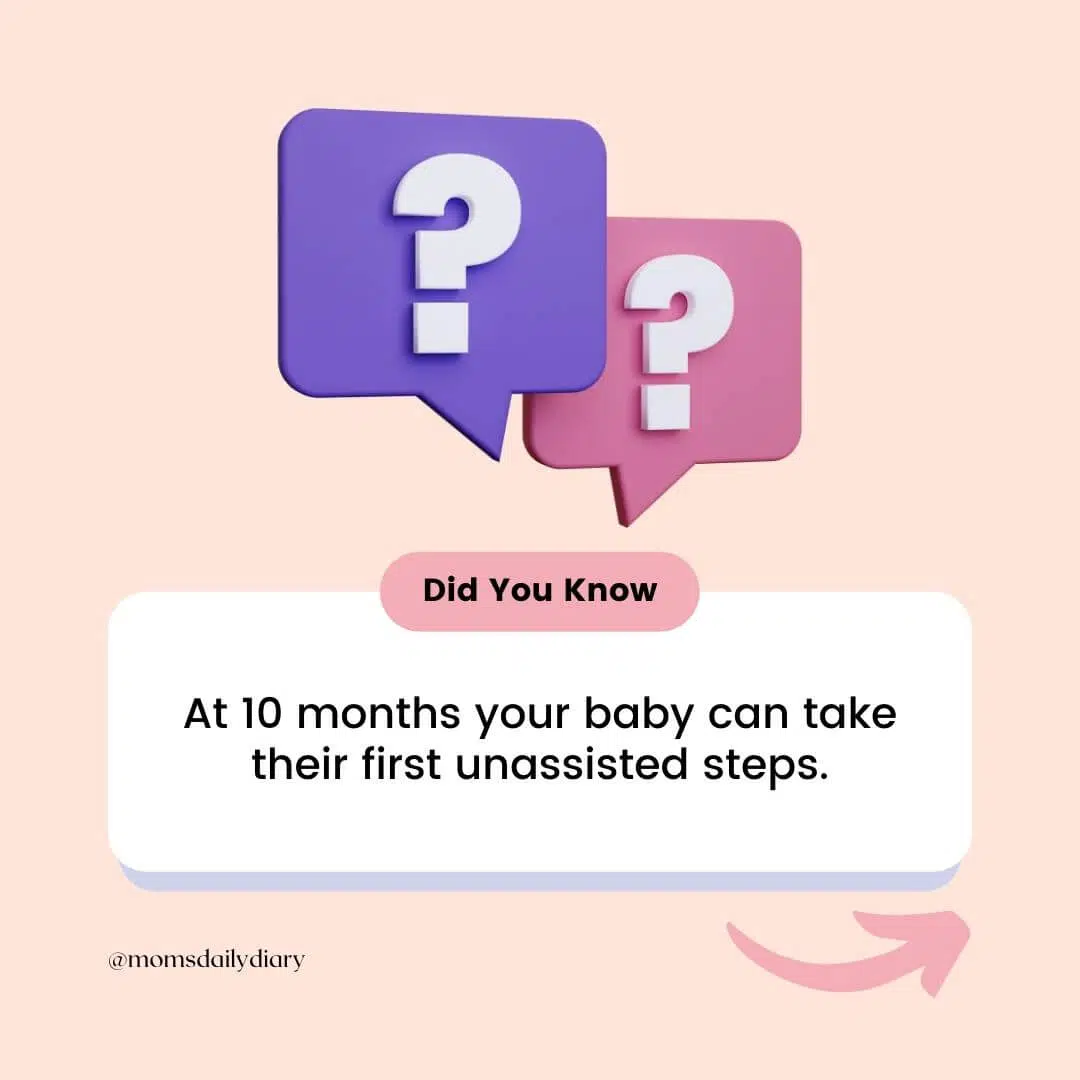
10-month-old babies are incredibly mobile. They are crawling, moving around while holding to furniture, climbing over the easier obstacles, standing up from a seated position, and sitting back down.
Some may even try to make their first unassisted steps. If they don’t it’s safe now to start showing them how to do it by holding both their hands and start moving slowly forward.
However, don’t get discouraged if they are not very good just yet. Remember that babies develop at a different rate and while some babies start walking at the age of 9 months, others may wait until they get 18 months.
At 10 months baby development, their pincer grasp would be getting pretty good as well. This means that they would easily grab small objects that can fit in their mouth. So make sure you’ve cleared all small objects out of the way as they pose a choking hazard.
If you haven’t baby-proofed your home by now, you may want to do it as soon as possible. Your baby is not only mobile but also curious and would love to test where they can climb or what fits into their mouth.
Already baby-proofed? See if you’ve missed something.
- All small, sharp, and shatterable objects have been removed from any low shelves. These can now be used to place toys that your baby can get for themselves.
- Corner protectors are placed on all low and sharp or pointy corners.
- All accessible outlets are secured with outlet covers.
- Low cabinets and drawers have child safety locks installed.
- There are baby gates between the living/play space and any stairs, fireplaces, and other off-limit areas.
- If you like to keep your doors open, put a door pinch guard to avoid the door closing on your baby’s fingers.
- Last but not least, strap your furniture securely so it doesn’t tip on your little one while they’re pulling or climbing.
Personality development
You’re probably stunned how quickly your little baby turned into a little human that crawls around, communicates, and looks for your attention.
They even show their own personality. Some would be calm and quiet, others may be fast-pacing and outgoing. They even have their own preferences, like a favorite toy, song, baby food, maybe even a favorite grandma.
And now it’s your job to show them the rest of the world so they find even more things they enjoy (or possibly dislike).
10-month baby schedule
As we already mentioned, at 10 months your baby may be ready to switch to a single daily nap. However, be sure not to pressure them into it. Babies are different and they will show you when they are ready.
Just to give you an example, my older switched to a single nap when she was 13 months old (I guess she loves her sleep). My baby girl, on the other side, switched days before turning 10 months old.
So to give you a better idea of what to expect, here are two samples of a 10-month baby schedule.
Two daily naps
7:00 Wake up
7:15 Breast milk or formula
7:30 Active time and play
9:30 Breakfast
10:30 Morning nap
11:30 Active time
12:00 Lunch
1:30 Noon nap
3:00 Afternoon snack
3:30 Playtime
5:00 Dinner
5:30 Quiet games
7:00 Bedtime routine
7:30/8:00 Breast milk or formula and sleep
One daily nap
7:00 Wake up
7:15 Breast milk or formula
7:30 Active time and play
9:30 Breakfast
10:30 Active time
12:00 Lunch
1:00 Noon nap
3:30 Afternoon snack
4:00 Playtime
5:00 Dinner
5:30 Quiet games
7:00 Bedtime routine
7:30/8:00 Breast milk or formula and sleep
Keep in mind that while 7 PM is the ideal time to put your baby to sleep, many babies just don’t agree with it. Don’t feel bad if your little one is not asleep as soon as the clock hits 7 PM. Find the bedtime that works best for you and your baby and stick to it. For us, this is 8 PM.
And if 8 sounds too early as well, try these few tips (all tested and working with both of mine):
- Have active mornings and quiet evenings. Leave all loud and flashy toys for the morning hours and spend the evenings with books, flashcards, or wooden toys.
- Avoid screen time after 5 PM. Screen time doesn’t necessarily mean YouTube Kids or a tablet in your little one’s hands. You watching a movie or the news on the TV also counts toward their screen time and can easily overstimulate them.
- Be consistent in your routine. Babies, and young kids in general, find comfort in routines and predictability. So sticking to the same daily or bedtime routine can aid their better sleep.
10-month-old baby activities
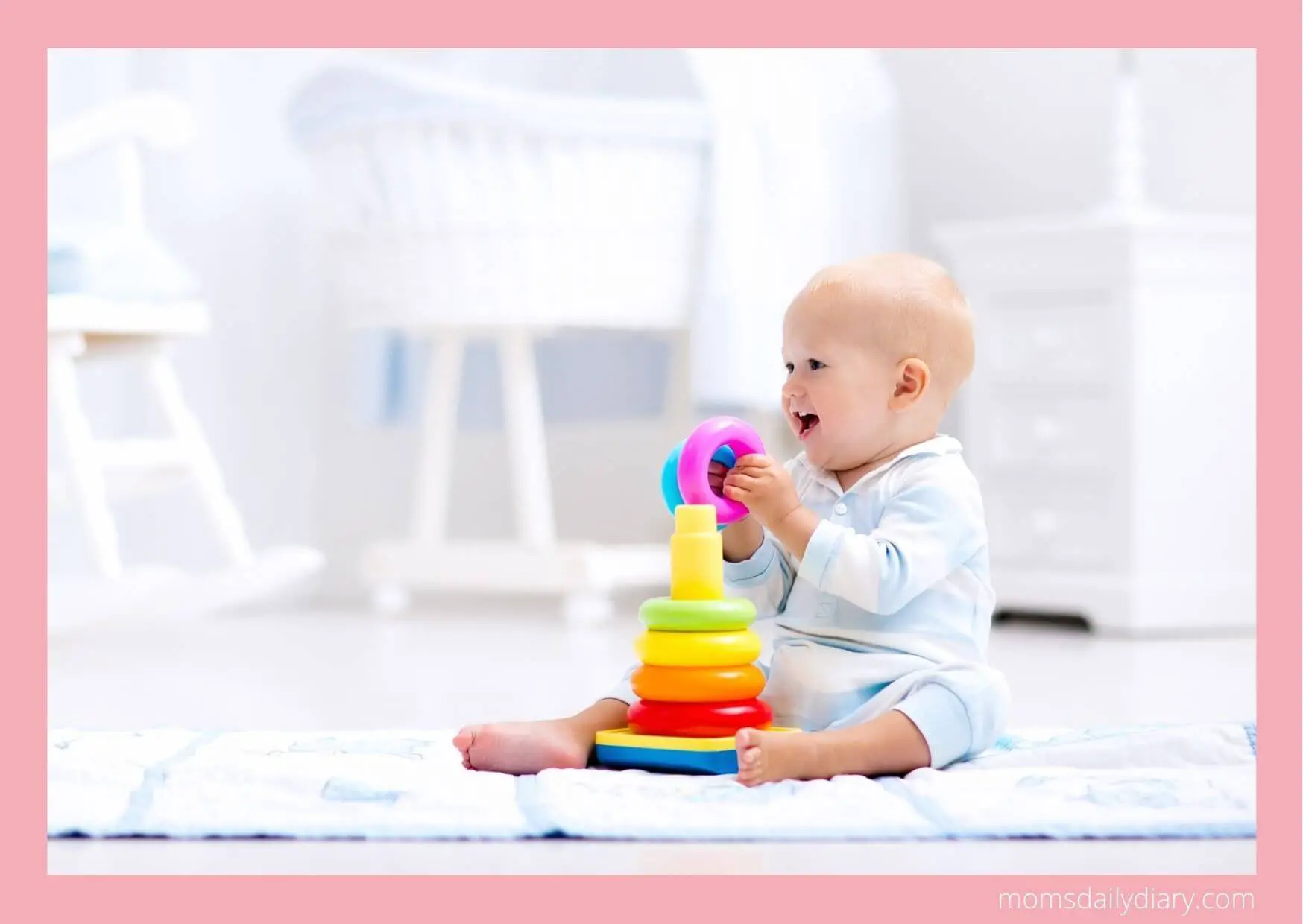
Stacking toys
Did you know that around your 10 months baby development, your little one will learn that smaller objects fit into larger ones?
That’s why stacking cups is one of the classic 10-months-old baby activities. And while building a tower could take them a month or two more, putting the cups into one another is surprisingly fun for babies.
Hide the toys
Object permanence is something babies start to learn as early as 5 months old. As part of their 10 months baby development, however, the concept is more familiar to them. They should now understand that an object is not gone just because they don’t see it.
You can help them practice this by hiding the toys somewhere they can find them by themselves with a little guidance.
Encourage walking
If your baby is already stable on their own two feet without having to hold for support, you may want to try and encourage them to make their first steps.
Whenever you see them standing up unsupported go and stand about two or three steps away from them and call them with your hands open.
Your baby’s first thing will be to sit down and crawl to you but eventually, they will make those glorious first steps.
You can also hold them by the hands and walk with them. If you do, be sure to let go when they decide that it’s time to sit down and continue on all four.
Some parents consider getting a walker, however, keep in mind that experts do NOT recommend using one. Why? First, they may be simply dangerous and cause accidents. And second, because your baby gets used to the support, instead of working towards developing their own muscle strength and balance.
Dropping toys
How is dropping toys good for their development? It’s not!
But although it doesn’t bring any value the pure joy and satisfaction on their face when they purposely drop a toy from the high chair just for you to pick it up and give it back is priceless.
However, keep in mind, that when they start dropping toys from the high chair or pacifiers from the crib, they will also likely be dropping them from the stroller as well. So keep your eyes open when you’re out for a walk.
10 months old milestones
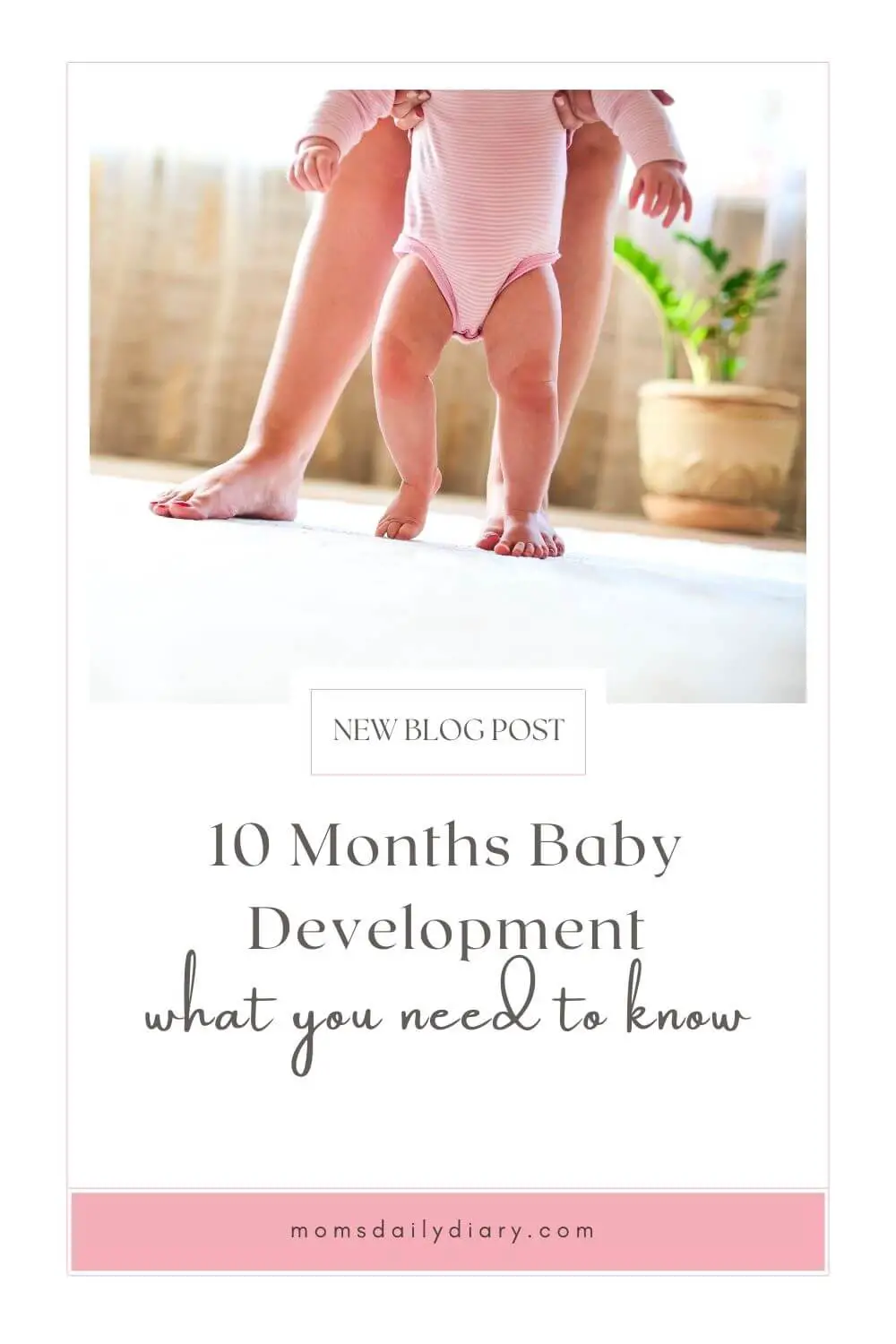
Social
- Responds with babbles and smiles when you speak to them.
- Understand simple words (like ‘No’, finally, and also ‘mom’, ‘dad’, or simple praise)
- May start pointing towards what they want.
- Can learn to wave ‘bye-bye’
Physical
- Pulls up to a standing position alone or by holding furniture
- Remains standing without support
- May take their first unassisted steps
- Crawls confidently to wherever they want to go
Verbal
- Babbles a lot
- Starts to say mama or dada
Cognitive
- May experience separation anxiety when you leave the room.
- Wants to explore their toys, what happens when you throw them, shake them, or bang them together.
- Shows preferences in foods and toys.
